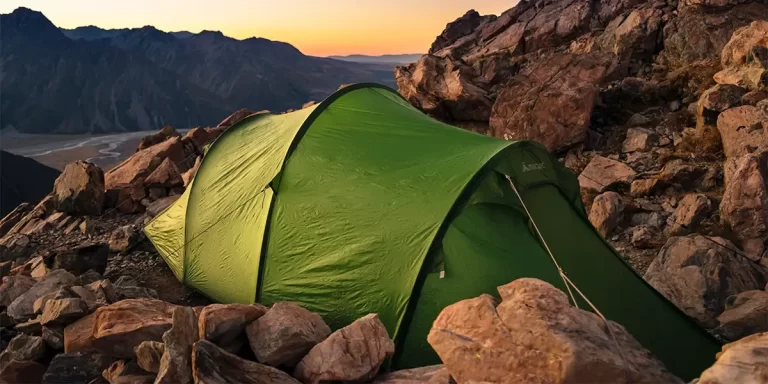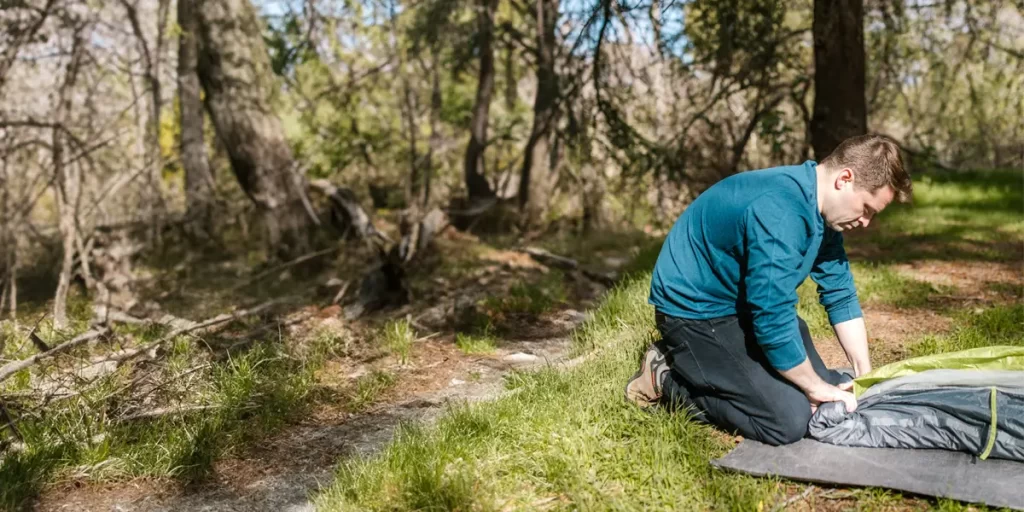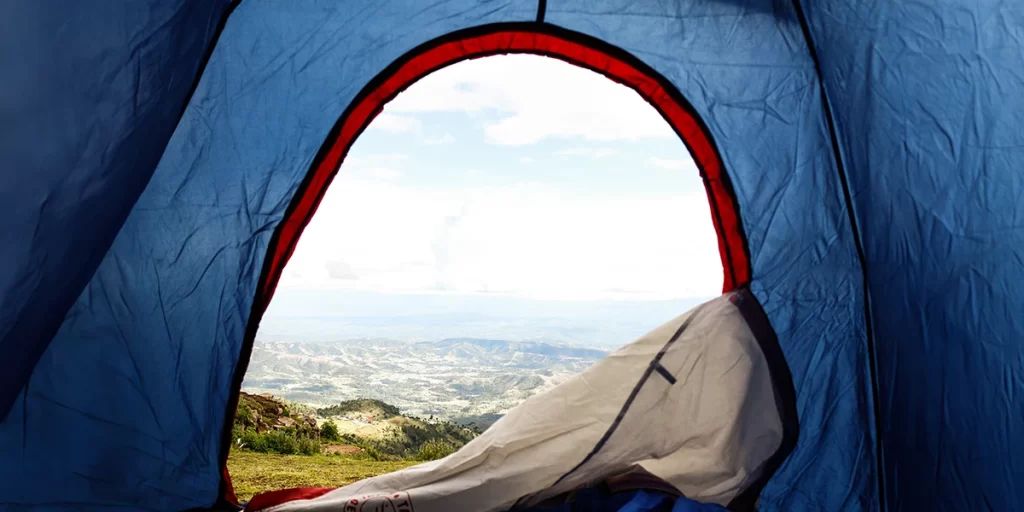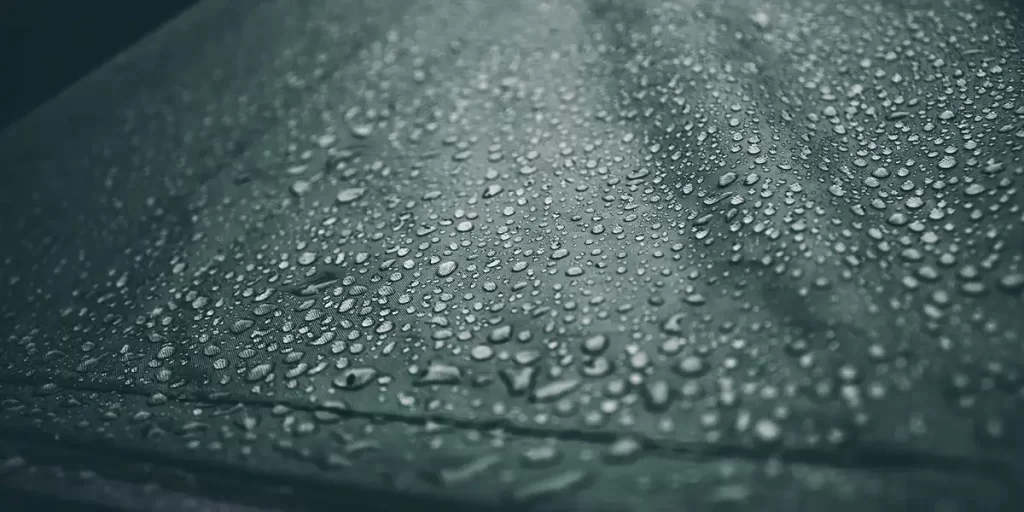

Whether you’re an enthusiastic adventurer or someone who enjoys occasional camping trips, you might have wondered how to care for a tent.
In this post, we’ll cover the basics of tent care, emphasizing the importance of overall maintenance, particularly focusing on the crucial aspect of caring for the fabric.
Interested? Let’s get started.
Your tent is more than fabric; it’s your wilderness home. Follow these four maintenance tips for years of outdoor performance:
For both seasoned backpackers and casual campers, it’s vital never to store your tent wet. Following this rule is crucial to ensure the long-lasting durability of your outdoor shelter.
Storing a wet tent accelerates damage in three ways:
Thus, to protect your investment and ensure your shelter lasts for years, always allow your tent to fully dry before storing it.

However, as we know, it’s not always possible to let your tent fully dry before packing it up on the trail. Here are some practical tips for those situations:
Tent poles, though sturdy, can be damaged if mishandled, affecting their strength and lifespan. To ensure they last, master the art of handling your tent poles with care:

Zippers are vital for weather protection and hassle-free camping. But outdoor conditions wear them out over time. To make tent zippers last:
A footprint enhances your camping gear; use one for these reasons:
If you’re not yet convinced, check out our dedicated post on the benefits of tent footprints here.

The fabric of your tent is a hardy barrier between you and the forces of nature.
Taking steps to maintain it well guarantees you can continue relying on your tent for expedition after expedition.
On the trail:
At home:
Fun Fact: Approximately 9 out of 10 tent damages are caused by improper storage.
Caring for your tent properly ensures it remains a reliable companion for years of adventure. By letting it dry fully, handling components gently, and maintaining the fabric, you can get the most out of your equipment.
While tent care may seem complex, just focus on these core principles:
Follow this guide and your tent will deliver years of stellar performance. Now get out there and start planning your next epic camping trip!
What’s next? Check out our post on how to choose the ideal tent for you.
Yes, waterproofing your tent, including seam sealing, is essential. Tent fabrics can lose their waterproof properties over time. Waterproofing helps maintain a dry and comfortable camping experience, extends your tent’s lifespan, and protects it from moisture, UV rays, and wear and tear. Use a suitable waterproofing product for your tent’s fabric and coatings to ensure reliable shelter during outdoor adventures. Follow the manufacturer’s instructions for application, which typically involve cleaning the tent, applying the waterproofing product evenly, and allowing it to dry thoroughly.
The frequency of re-waterproofing a tent depends on several factors such as the age of the tent, material, conditions of use, and whether any leakage is present. As a general guideline for modern backpacking tents made of polyester or nylon fabrics, re-waterproofing the fly and floor every 3-5 uses or 1-2 seasons is sufficient under regular usage. Harsher environments like heavy rain or abrasive trails may require more frequent applications. Always re-waterproof if leaks appear, and before and after extended storage. Using a quality waterproofing spray or immersion system can help prolong a tent’s weather resistance between treatments. Checking seams annually and resealing as needed will further safeguard a tent’s integrity in wet outdoor conditions.
Whether or not you can wash your tent in a washing machine depends on the tent fabric and construction. Most modern backpacking tents list machine washing as an acceptable cleaning method, provided it is done on a gentle or delicate cycle using a small amount of fragrance-free laundry detergent made for sensitive fabrics. However, some ultralight silnylon or cuben fiber tents may be damaged by agitation and should only be spot cleaned. It’s best to check your owner’s manual first or contact the manufacturer if unsure. A front-loading machine is preferable to avoid snags. Always air dry completely to prevent mildew and never use heat settings, which can degrade waterproof coatings over time. Proper drying is essential to maintain a tent’s moisture-wicking and water-resistant capabilities.
If your tent becomes wet, prioritize ventilation by fully opening all doors, windows, and the fly to maximize air flow and drying. In sunny conditions, positioning the tent in direct sunlight allows moisture to evaporate efficiently, while rainy days necessitate setting up indoors. Using drying racks and lines provides optimal ventilation by creating air spaces within the tent fabric. Be sure to empty all pockets of wet gear as well. After fully drying, inspect the tent and repair any seams if needed. Proper ventilation is key to prevent mold and mildew issues from lingering moisture, so contact the manufacturer for further guidance if problems persist despite thorough tent drying and inspection.
Following some basic principles will help you maximize the lifespan of your tent investment. Always prioritize thorough drying by pitching the tent open after wet excursions to prevent mold growth. Handle poles and zippers gently when stowing away. Shield the fabric from prolonged sun and harsh chemicals which can degrade materials over time. Regularly inspect seams for repairs and apply a waterproofing treatment to the rainfly at least once per season or as needed. A quick brush down before the occasional machine washing or spot cleaning extends usability. By letting your tent fully dry, caring for delicate components, and protecting the shell, you’ll enjoy reliable shelter on countless future wilderness trips for seasons to come.